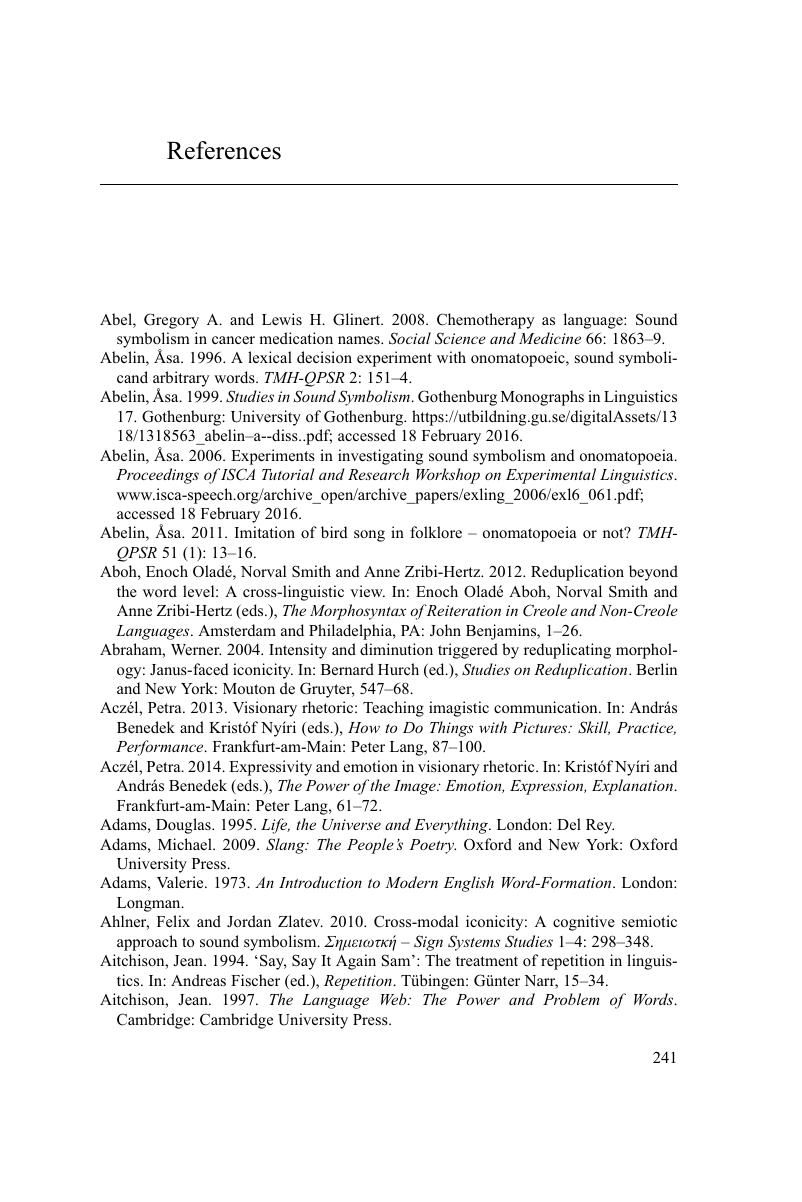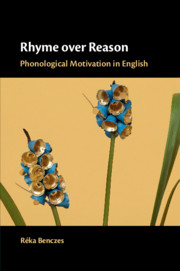Book contents
- Rhyme over Reason
- Rhyme over Reason
- Copyright page
- Dedication
- Contents
- Figures
- Tables
- Acknowledgements
- 1 Introduction
- 2 Phonological Motivation in Language Evolution and Development
- 3 Phonetic Symbolism
- 4 Onomatopoeia
- 5 Rhyme and Alliteration in Blends and Compounds
- 6 Words, Words, Words
- 7 Conclusions
- Appendix
- References
- Index
- References
References
Published online by Cambridge University Press: 28 January 2019
- Rhyme over Reason
- Rhyme over Reason
- Copyright page
- Dedication
- Contents
- Figures
- Tables
- Acknowledgements
- 1 Introduction
- 2 Phonological Motivation in Language Evolution and Development
- 3 Phonetic Symbolism
- 4 Onomatopoeia
- 5 Rhyme and Alliteration in Blends and Compounds
- 6 Words, Words, Words
- 7 Conclusions
- Appendix
- References
- Index
- References
Summary

- Type
- Chapter
- Information
- Rhyme over ReasonPhonological Motivation in English, pp. 241 - 263Publisher: Cambridge University PressPrint publication year: 2019



